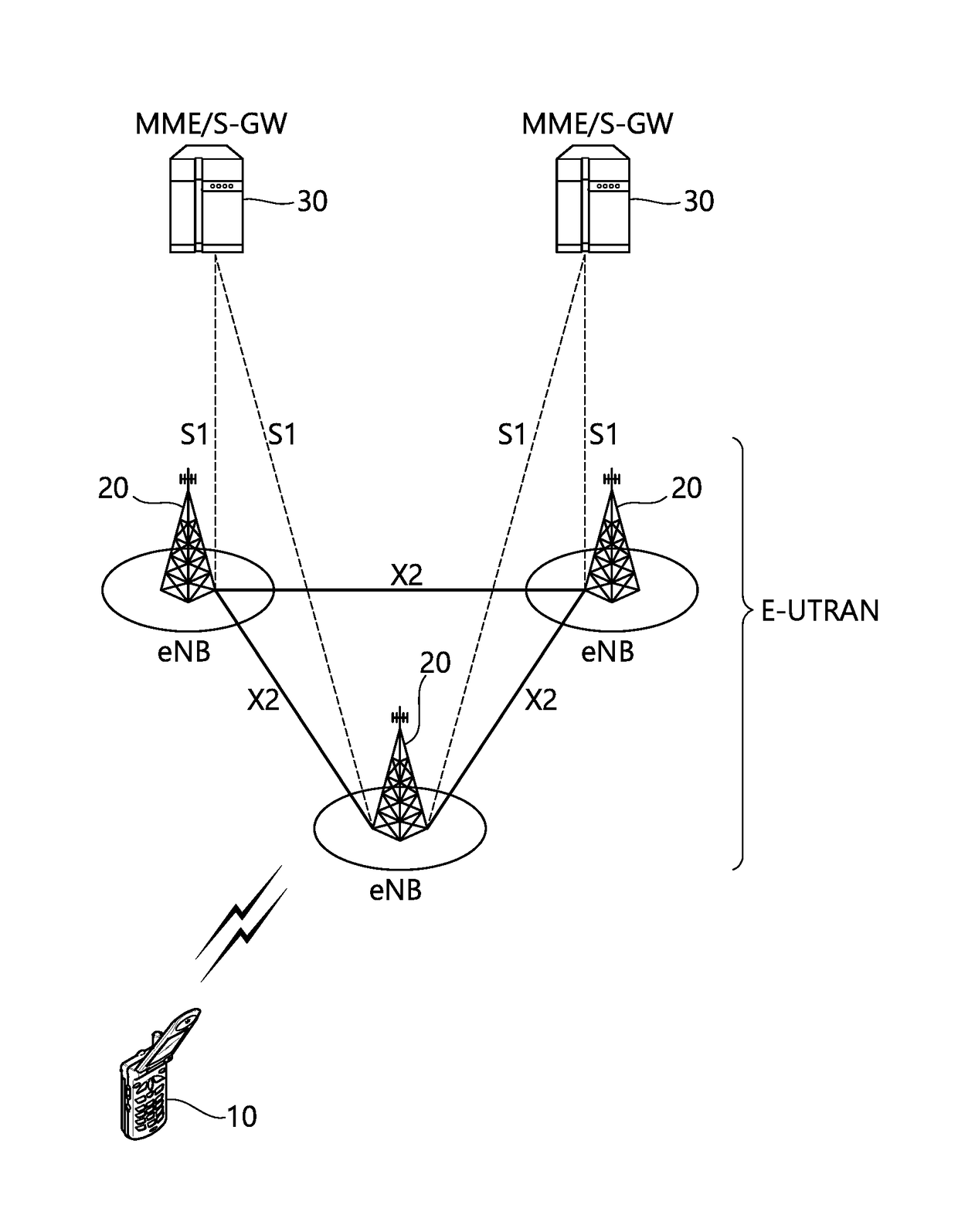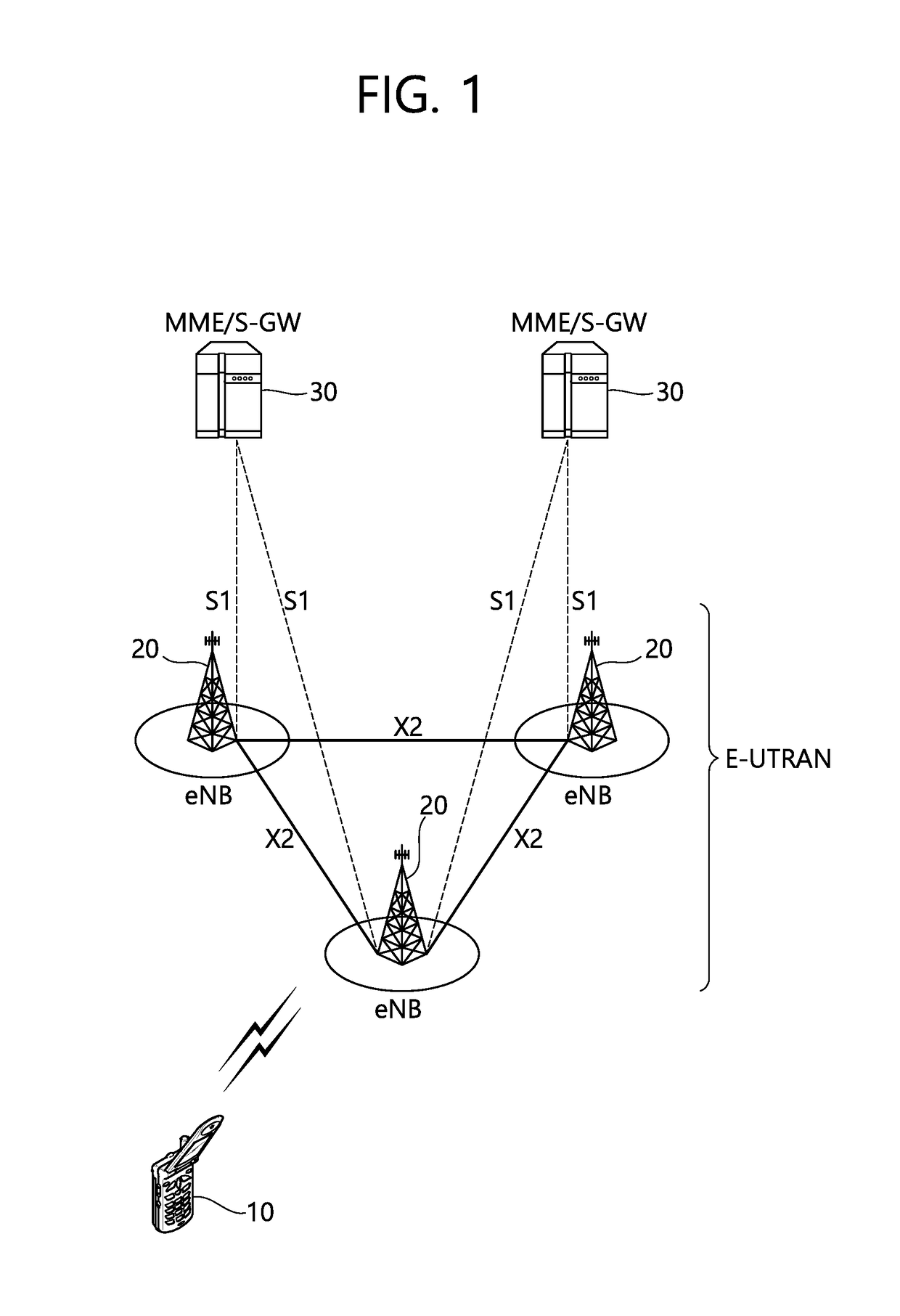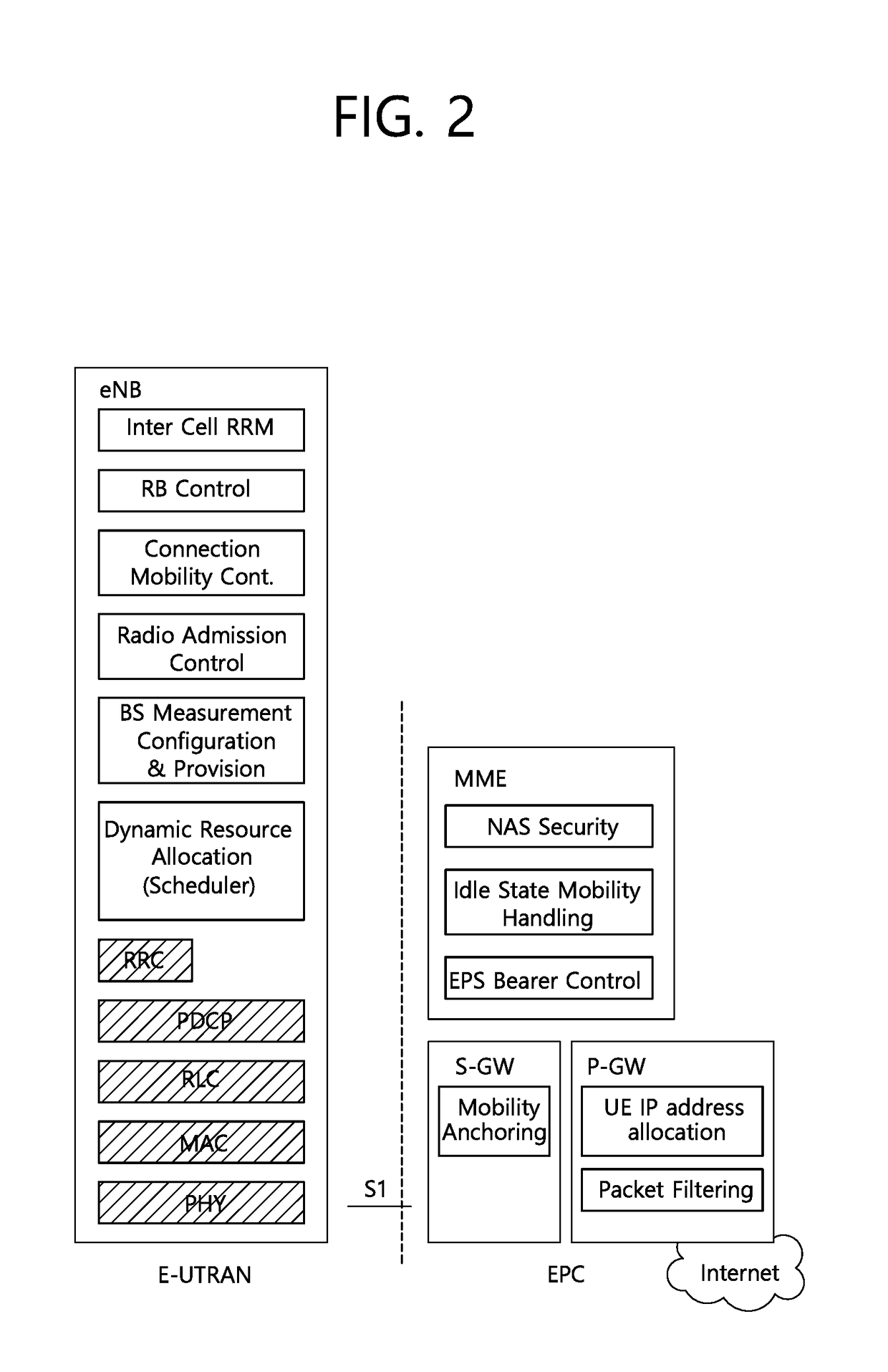Method and apparatus for handling l2 entity in continuity between sc-ptm transmission and mbsfn transmission in wireless communication system
- Summary
- Abstract
- Description
- Claims
- Application Information
AI Technical Summary
Benefits of technology
Problems solved by technology
Method used
Image
Examples
first embodiment
(1) SC-PTM Transmission->MBSFN Transmission
[0088]FIG. 9 shows an example of change from SC-PTM transmission to MBSFN transmission according to an embodiment of the present invention.
[0089]In step S100, the UE is receiving a service via SC-MTCH mapped on DL-SCH from the eNB. In step S110, the MCE decides to use MBSFN transmission over SC-PTM transmission.
[0090]When the UE changes from DL-SCH reception at a cell to MCH reception at a MBSFN area for the same service, in step S120, the UE decides on re-establish the L2 entity. More specifically, if the cell belongs to the MBSFN area, the UE may maintain L2 entity, i.e. no re-establishment upon this change. The UE may apply a new logical channel identity for the MTCH according to RRC message for SC-PTM transmission. Alternatively, if the cell does not belong to the MBSFN area, or the eNB indicates re-establishment, the UE may re-establish the L2 entity. The UE may apply a new logical channel identity for the MTCH according to RRC messag...
second embodiment
(2) MBSFN Transmission->SC-PTM Transmission
[0093]FIG. 10 shows an example of change from MBSFN transmission to SC-PTM transmission according to an embodiment of the present invention.
[0094]In step S200, the UE is receiving a service via MTCH mapped on MCH from the eNB. In step S210, the MCE decides to use SC-PTM transmission over MBSFN transmission.
[0095]When the UE changes from MCH reception at a MBSFN area to DL-SCH reception at a cell for the same service, in step S220, the UE decides on re-establish the L2 entity. More specifically, if the cell belongs to the MBSFN area, the UE may maintain L2 entity, i.e. no re-establishment upon this change. The UE may apply a new logical channel identity for the MTCH according to RRC message for SC-PTM transmission. Alternatively, if the cell does not belong to the MBSFN area, or the eNB indicates re-establishment, the UE may re-establish the L2 entity. The UE may apply a new logical channel identity for the MTCH according to RRC message for...
third embodiment
(3) SC-PTM Transmission->SC-PTM Transmission
[0098]FIG. 11 shows an example of change from SC-PTM transmission to another SC-PTM transmission according to an embodiment of the present invention.
[0099]In step S300, the UE is receiving a service via SC-MTCH mapped on DL-SCH from the source cell. In step S310, handover or cell reselection is performed.
[0100]When the UE changes from DL-SCH reception at the source cell to DL-SCH reception at the target cell for the same service, in step S320, the UE decides on re-establish the L2 entity. More specifically, if both the source cell and target cell belong to the same MBSFN area, the UE may maintain L2 entity, i.e. no re-establishment upon this change. The UE may maintain a logical channel identity. Alternatively, if the source cell and target cell do not belong to the same MBSFN area, or the eNB indicates re-establishment, the UE may re-establishes the L2 entity. The UE may apply a new logical channel identity for the MTCH according to RRC ...
PUM
 Login to View More
Login to View More Abstract
Description
Claims
Application Information
 Login to View More
Login to View More - R&D
- Intellectual Property
- Life Sciences
- Materials
- Tech Scout
- Unparalleled Data Quality
- Higher Quality Content
- 60% Fewer Hallucinations
Browse by: Latest US Patents, China's latest patents, Technical Efficacy Thesaurus, Application Domain, Technology Topic, Popular Technical Reports.
© 2025 PatSnap. All rights reserved.Legal|Privacy policy|Modern Slavery Act Transparency Statement|Sitemap|About US| Contact US: help@patsnap.com



